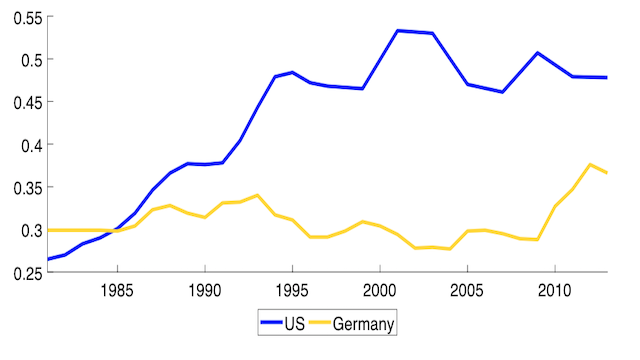The unemployment rate in the United States is more than double that of other advanced economies, such as Germany’s, and inadequate employment protection in the U.S. likely is the key factor, researchers say.
In a working paper published recently by the National Bureau of Economic Research, the researchers say that lack of employment protection also is responsible for rising inequality among U.S. workers and stagnating wages for those with less education.
In “Why Didn't the College Premium Rise Everywhere? Employment Protection and On-the-Job Investment in Skills,” economists Matthias Doepke of Northwestern University and Ruben Gaetani of the University of Toronto developed a model using labor market data from the U.S. and Germany to guide their analysis.
In the model, they found that employment protection creates an expectation of long-lasting jobs, which provides incentives for workers and employers for investing in the relationship. Workers invest more in job-specific skills, and employers create more jobs that reward such investment.
“Workers without a college degree are especially vulnerable to these economic shocks since their skills tend to be more job-specific and less transferable across employers,” Doepke said. “If these shocks become more frequent, the earnings of workers without a college degree will stagnate and good jobs for them will become scarce.”
This has increased the wage gap between college graduates and everyone else in recent decades, according to Doepke.
In the United States, most workers are employed at will, meaning they can be dismissed at any time if the employer so chooses. In contrast, German workers can only be dismissed for a limited set of reasons. Moreover, German law requires firms who lay off workers to follow criteria when deciding which workers to dismiss, giving special protection to older workers and those with long tenure.
As both countries respond to the economic fallout of COVID-19, the unemployment rate in the United States is now 13.3% compared to 6.1% in Germany. The U.S. unemployment rate has risen particularly fast for workers with less education, suggesting that the trend towards more wage inequality will continue during the recovery from the crisis.


